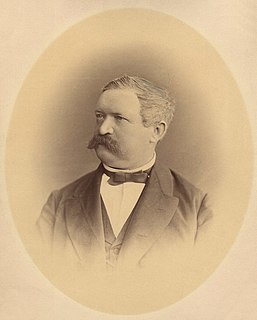
Christoph Gottfried Andreas Giebel was a German zoologist and palaeontologist. He was a professor of zoology at the University of Halle where he managed the zoology collections at the museum. His interests were in systematics and paleontology and he opposed Darwinian evolution. He published several works including Palaozoologie (1846); Fauna der Vorwelt (1847-1856); Deutschlands Petrefacten (1852); Odontographie (1855); Lehrbuch der Zoologie (1857); and Thesaurus ornithologiae (1872-1877).

Christian Ludwig Nitzsch was a German zoologist. He is best remembered for his approach to classifying birds on the basis of their feather tract distributions or pterylosis of their young.

Pyrophorus is a genus of click beetle. They are one of several genera in the tribe Pyrophorini, all of which are bioluminescent. Their bioluminescence is similar to that of another group of beetles, the fireflies, although click beetles do not flash, but remain constantly glowing. They have two luminescent spots at the posterior corners of the pronotum, and another brighter light organ on the most-anterior surface of the ventral abdomen. This light organ is even brighter and can only be seen when in flight. Bioluminescent click beetles are found throughout tropical, subtropical and temperate America. Species from Texas, Florida, Puerto Rico, and Cuba are now in different genera in the tribe Pyrophorini, such as Deilelater and Ignelater.

Ernst Friedrich Germar was a German professor and director of the Mineralogical Museum at Halle. As well as being a mineralogist he was interested in entomology and particularly in the Coleoptera and Hemiptera. He monographed the heteropteran family Scutelleridae.

Chrysolopus is a genus of weevils in the family Curculionidae.

Chrysolina is a large genus of leaf beetles in the subfamily Chrysomelinae. Most species are distributed in Europe, Asia and Africa with a small number of species inhabiting North America and introduced species in Australia.
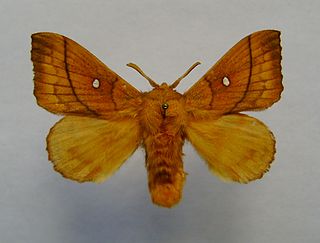
Odonestis is a genus of moths in the family Lasiocampidae described by Ernst Friedrich Germar in 1812. It consists of twenty-two species, which is found in Europe, Russia, Asia Minor, China and Japan.
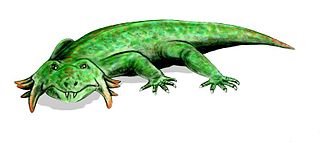
Procolophonoidea is an extinct superfamily of procolophonian parareptiles. Members were characteristically small, stocky, and lizard-like in appearance. Fossils have been found worldwide from many continents including Antarctica. The first members appeared during the Late Permian in the Karoo Basin of South Africa.
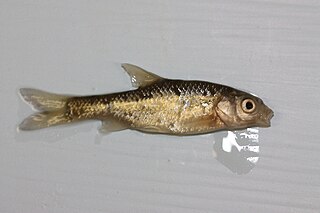
The chubbyhead barb is a species of freshwater ray-finned fish in the genus Enteromius. The fish is found throughout South Africa in a variety of aquatic environments. The species is notable for its two breeding seasons, which allows it to flourish despite a short lifespan.

Helops is a genus of darkling beetles in the subfamily Tenebrioninae.

Apodiphus is a genus of shield bugs belonging to the family Pentatomidae, subfamily Pentatominae.
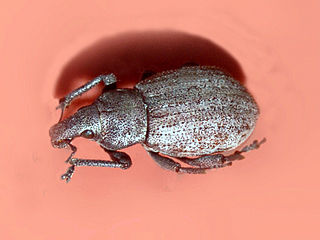
Barynotus is a genus in the weevil family (Curculionidae).

Clanoptilus is a genus of beetles belonging to the family Melyridae.

Luperus is a genus of skeletonizing leaf beetle belonging to the family Chrysomelidae, subfamily Galerucinae.

Anoplus plantaris is a species of weevil native to Europe.

The Tettigometridae are a family of Fulgoromorpha (planthoppers), with a species distribution from: Europe, Africa, Asia through to west Malesia.
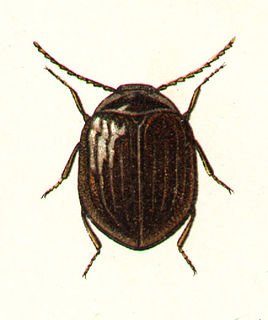
Eubria palustris is a species of beetle belonging to the family Psephenidae.
Liparus is a genus of beetles belonging to the family Curculionidae.
















